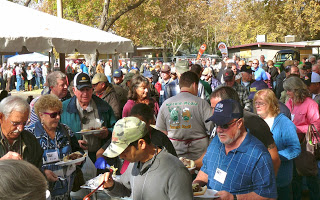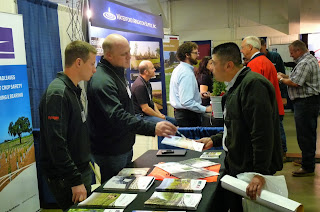Trees
Fusarium Dieback / Polyphagous Shot Hole Borer
Recently a new beetle/fungal complex was detected on avocado and other host plants in Los Angeles, Orange and San Bernardino Counties. The two fungal species are Fusarium euwallaceae and Graphium sp., which form a symbiotic relationship with a recently discovered beetle that is commonly known as the polyphagous shot hole borer (PSHB, Euwallacea sp.)
Together, they cause the disease Fusarium dieback (FD). When the beetle burrows into the tree, it inoculates the host plant with the fungus (Fig. D), which is carried in its mouthparts in a structure called mycangia.
The fungus attacks the vascular tissue of the tree, blocking the transport of water and nutrients from the roots to the rest of the tree, and eventually causing branch dieback. The beetle larvae live in galleries within the tree and feed on the fungus.
FD has been observed on more than 110 different plant species in California, including many species common in urban landscapes and on such agriculturally important species as avocado, olive and persimmon.
Symptoms: Each host species shows different symptoms depending on the response to infection. Sycamore, box elder, maple, red willow, and castor bean are good trees to search for signs and symptoms of the beetle, as it tends to prefer to infest these hosts first. Depending on the tree species attacked, PSHB injury can be identified either by staining, gumming, or a white-sugar exudate on the outer bark in association with a single beetle entry hole.
The vector beetle: An exotic ambrosia beetle (Euwallacea sp.) is very small and hard to see. At the advanced stage of infestation, there are often many entry/exit holes on the tree (Fig. E-F). Females are black and about 1.8 – 2.5 mm (0.07-0.1 inch) long (Fig. A-B (right)); males are brown colored and about 1.5 mm (0.05 inch) long (Fig. B ((left)). The entry/exit hole is about 0.85 mm (0.033 inch).
What to do:
- Look for a single entry/exit hole surrounded by wet discoloration of the outer bark
- Scrape off the bark layer around the infected area to look for brown discolored necrosis caused by the fungus.
- Follow the gallery to look for the beetle (may or may not be present).
- Avoid movement of infested firewood and chipping material out of infested area.
- Look for other hosts (Castor bean, sycamore, maple, coast live oak, goldenrain, liquidambar) showing symptoms of the beetle/disease.
- Sterilize tools to prevent to spread of the disease with either 25% household bleach, Lysol® cleaning solution, or 70% ethyl alcohol.
Who to contact if you find the problem: If you suspect that you have found this beetle or seen symptoms of the Fusarium dieback on your tree please contact either your local farm advisor, pest control advisor, county Ag Commissioner office or Dr. Akif Eskalen by either phone 951-827-3499 or email at akif.eskalen@ucr.edu.
For more information visit www.eskalenlab,ucr.edu.
















